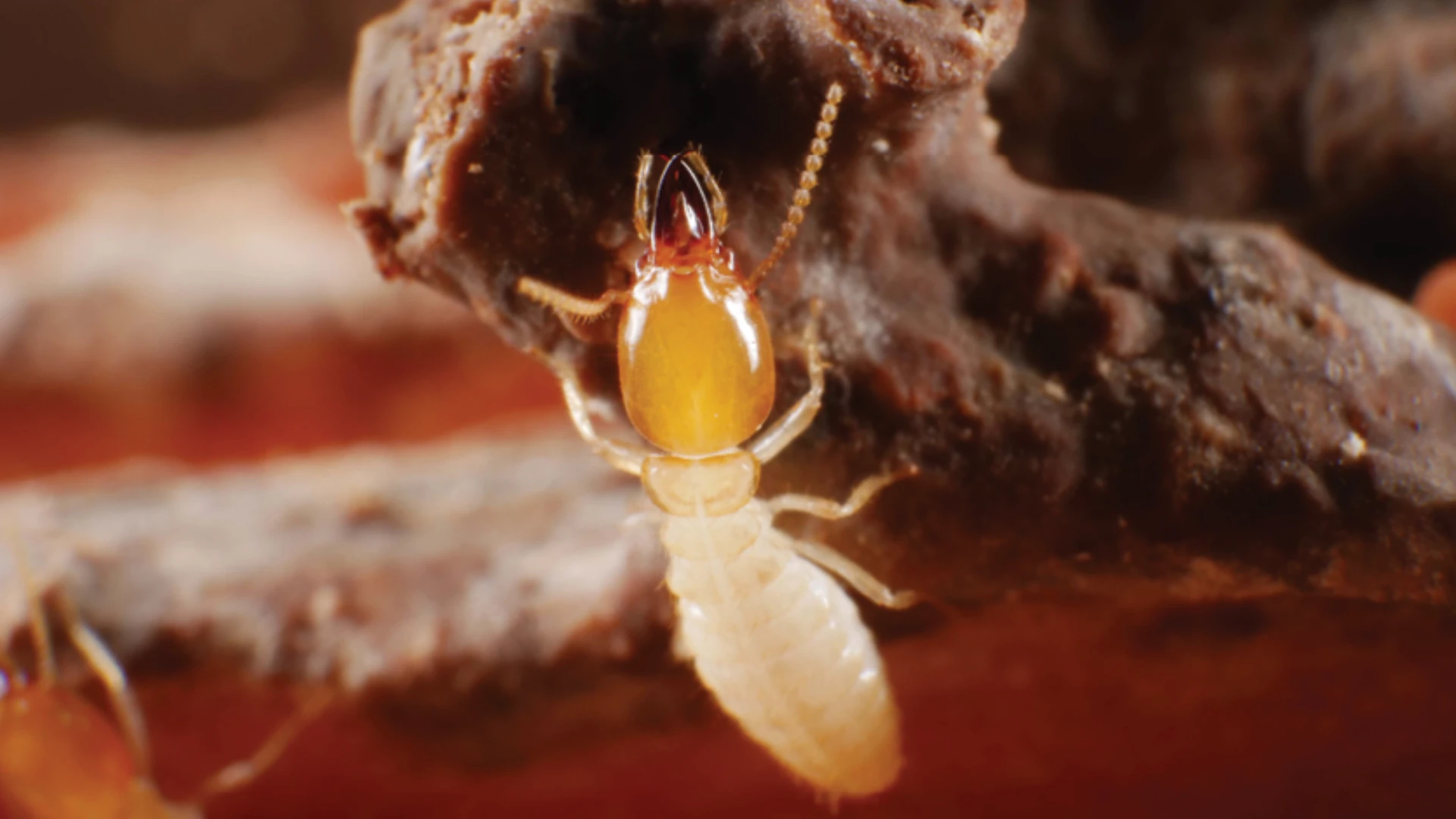On warm summer nights, hosts of wild things emerge from the fragments of their natural habitat and stealthily disperse across the lawns of suburbia. We usually discover evidence of this secretive nocturnal traffic when the sun comes up, in the form of startling encounters with a variety of common but unexpected creatures that have somehow penetrated deep into civilization in their quest for new living space.
For example, far away from any river or lake, snapping turtles suddenly appear on driveways and bullfrogs surface in swimming pools. But some of these resourceful visitors are downright disconcerting. Throughout most of the East and Midwest, taking its place among the silently creeping, hopping, crawling hordes, is an enormous species of forest spider with a 3½-inch leg span (see figure 1 on page 74). Every year these awesome arachnids decide to seek shelter in our buildings, flooding the veins of homeowners with adrenaline and provoking panicked calls for professional assistance. What is this megaspider? And is anything safe when it gets hungry? Its scientific name is Dolomedes tenebrosus and its story is full of surprises.
THE WANDERER. For starters, although many people can’t help calling it a “wolf spider,” it’s not a wolf spider at all — it’s actually a type of fishing spider, albeit one that lives mostly in trees and doesn’t fish. But first, I’d like to talk about the one critical aspect of its biology that most often grabs our attention, which is its propensity for showing up just about anywhere. I can think of no better example than when I recently walked into the University of Maryland Campus Recreation Center, entering through two sets of glass doors and strolling at least 10 yards down the main corridor’s gleaming, freshly buffed floor tiles. Something discordant caught my eye on one of those tiles. In a corner against a railing post crouched a mature female D. tenebrosus, secure in a mass of untidy webbing. Stark against the high-sheen substrate, it looked — in the immortal words of Raymond Chandler (Farewell, My Lovely) — “about as inconspicuous as a tarantula on a slice of angel food.”
Or perhaps even more noteworthy was the large brown spider that caused a commotion as it roamed around on polished tiles of the seventh floor of an office building deep in the heart of downtown Washington, D.C. — my own office building, in fact. It was D. tenebrosus again, this one an immature female. How it got up there is anyone’s guess. (I assume it was a stowaway in something and simply rode up the freight elevator.) Naturally, the more typical man-made habitats for them are basements, garages and sheds, where they are often discovered on vertical surfaces in a characteristic head-down position. Although they can’t negotiate really smooth walls, they can climb just fine if the surface is slightly rough, like cinderblock, wood or even textured paint. I’ve seen a monstrous one scuttle behind a picture frame in a living room, and one that was chilling in a window air conditioning unit.
DARING TO BE DIFFERENT. Crawling too far up any vertical surface and resting head down is definitely not general diagnostic behavior for wolf spiders, but on the other hand, typical fishing spiders have no interest in sheds, basements and polished floors. Most of D. tenebrosus’ closest relatives are inextricably tied to environments such as swamps, ponds and streams. As a group, they have evolved a marvelously specialized lifestyle in which water is a friendly rather than a hostile medium. Fine hairs on their feet allow them to walk or run on the surface and hairs surrounding their book lungs trap bubbles of air that permit them to dive and stay submerged for a half hour or even longer. Their ability to catch and subdue small fish, frogs and tadpoles is legendary among arachnologists.
A lot of animal taxa have distinctive members that have transcended the normal characteristics of their relatives and have managed to expand into different niches. D. tenebrosus is a good example of these enterprising nonconformists. Although they are sometimes called “dock spiders” in Canada since they are often observed on those structures, they are basically woodland dwellers that are usually found on tree trunks, under the loose bark of standing dead trees or in tree cavities. Several authors have noted that this species prefers to be near streams, and that may be true, but I have found them in dry, upland forest or woodlots with no water anywhere in the vicinity.
What do they eat? The phrase “anything they want to” comes to mind, at least for the huge mature females (the males, as is typical for many spiders, are much smaller and less robust). An interesting report by Dr. Kelly Kissane, a Dolomedes expert, describes five immature D. tenebrosus females feeding on slugs in a Missouri park. While the observation might just reflect the ready availability of these mollusks as prey items in that location, the ability of the spiders to overcome the slugs’ defensive mucus is an impressive feat and unknown for any other species of North American spider.
LOOK THEM IN THE EYE. So what makes D. tenebrosus a fishing rather than a wolf spider — taxonomically, that is — and how can you be sure of the identity of that formidable arachnid warily eyeing you in the basement? Why, by its eyes, of course, the first step in distinguishing spiders that otherwise look more or less alike. Although the mottled body and striped legs of a D. tenebrosus female are pretty distinctive, the general form of the species does bear a passing resemblance to the larger wolf spiders. But approach your mystery guest, ask it to stay calm for a moment, and check out its face. The top row of Dolomedes eyes look like four polished carbuncles, all about the same size (see figure 2 page 80). Wolf spiders, on the other hand, seem as if they have built-in binoculars, with two very much larger, round googly eyes right in front that gives them a perpetually startled look.
Another big difference between the two types of spiders is that D. tenebrosus females, like all of its close relatives, carry around their enormous egg sac in their jaws. The overall impression is that of an arachnid straddling a beach ball. Soon before the eggs hatch, mom suspends the sac in a silken “nursery.” The young stay in this protective shelter for a short time after hatching, so the family to which Dolomedes belongs is called “nursery web spiders.” In contrast, wolf spiders carry their relatively smaller egg sac at the rear, attached to their spinnerets. When the young hatch, they climb aboard mom’s back and literally get a free ride through the neighborhood.
A BIZARRE ENCOUNTER. We now come to one of the strangest spider stories I’ve ever heard, which happened to my wife, Dr. Nancy Breisch. I report this somewhat reluctantly, because it is so out of the norm — but it happened, and therefore needs to be recorded for posterity and mulled over by learned men and women. Nancy is a professional urban and forest entomologist, has a lifetime’s worth of field biology experience and — most critically — doesn’t have an arachnophobic bone in her body (that’s her hand in the photo on page 74). She is also famous among her peers for being incapable of exaggeration.
One warm August evening, she and our pet Corgi stepped out of the house onto the concrete patio at our back door. On the patio was a fairly large spider with a small body and a 2-inch leg span. The dog sniffed it, whereupon the spider reared up and sprang off the ground at its face. Reflexively flinching back, the dog just barely escaped contact, but the spider advanced and jumped at it again. Nancy grabbed the Corgi’s collar, hustled him back inside, then went back onto the patio. I happened to be inside at the time, blissfully zoned out in front of the TV, and vaguely wondering what all the commotion was about.
The spider was still out there, and to Nancy’s surprise, it immediately reacted in exactly the same way — it leapt up at her and would have landed on her foot had she not jerked back. She had no doubt that this was an aggressive/defensive response directed at her, rather than some random hop that happened to be in her direction. Admittedly startled because of the spider’s persistence, she retreated back inside (I glanced up from my beer and thought she was acting kind of weird) and got a can of rapid knockdown aerosol. First carefully checking to confirm that spiders were on the label (nah, just kidding), she blasted it to kingdom come and preserved it in alcohol. Confirming our own impressions, Dr. Kissane identified it as a male Dolomedes, probably tenebrosus.
So what exactly was going on out there? As someone who deals a lot with the overly excitable public and has heard her share of whoppers over the years, Nancy was left shaking her head. “I have to admit,” she said, “if some homeowner had come to me with the same story, I would have immediately dismissed it as a grossly distorted account of some innocuous behavior.” She suspects that the hopping may have been primarily an alarm reaction, analogous to the sudden vertical jump of a frightened rodent.
Unequivocally aggressive responses by spiders toward people and dogs have been well documented for a few dangerously venomous tropical or subtropical species, most notably the notorious Sydney funnelweb (Atrax robustus) and related species in Australia, and the so-called wandering spiders (Phoneutria fera and nigriventer) in South America. But never in the U.S.; We don’t expect that degree of passion from our arachnids. And there is nothing to suggest that D. tenebrosus venom is significantly more potent than your average backyard spider. As far as I know, there is one brief published record of a Dolomedes bite, resulting in a minor lesion that healed without complications.
All photos are © Al Greene/Nancy L. Breisch
The author gratefully acknowledges Dr. Kelly Kissane for identifications of Dolomedes specimens and Dr. Nancy Breisch for sharing her surreal encounter on the back patio. The opinions expressed herein are the views of the author and do not necessarily reflect the official policy or position of the U.S. GSA.
The author is regional entomologist for the U.S. General Services Administration in Washington, D.C. He can be reached via e-mail at agreene@giemedia.com.

Explore the October 2005 Issue
Check out more from this issue and find your next story to read.
Latest from Pest Control Technology
- Kwik Kill Pest Control's Neerland on PWIPM Involvement, Second-Generation PCO
- Webinar: Employee Incentives — Going Beyond the Annual Raise
- Pest Control Companies Helping Neighbors in Need Eradicate Bed Bugs
- Why Does Marketing Feel So Opaque?
- How Did This Pest Get Its Name?
- Rose Pest Solutions Honors Top Performers with Annual Chief’s Club Awards
- Doug Foster on Termite Control Equipment, Resources
- Pest Control Consultants Acquires EcoGuard Pest Control





